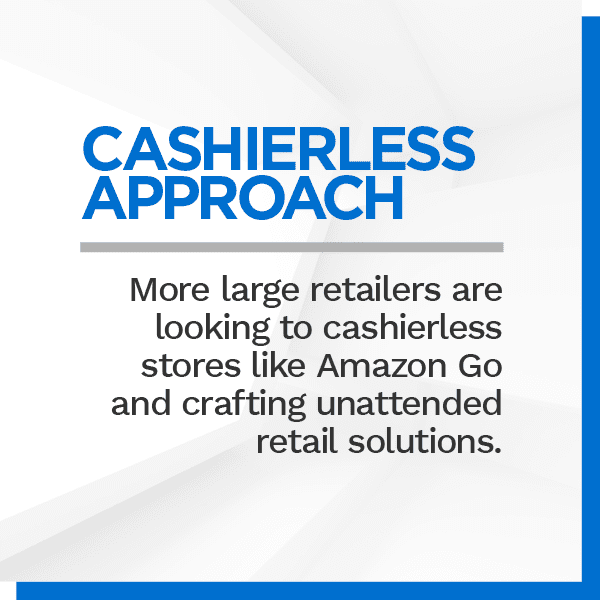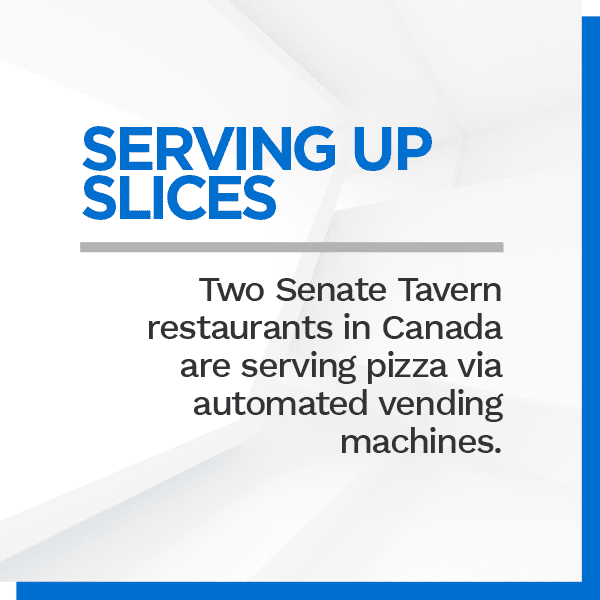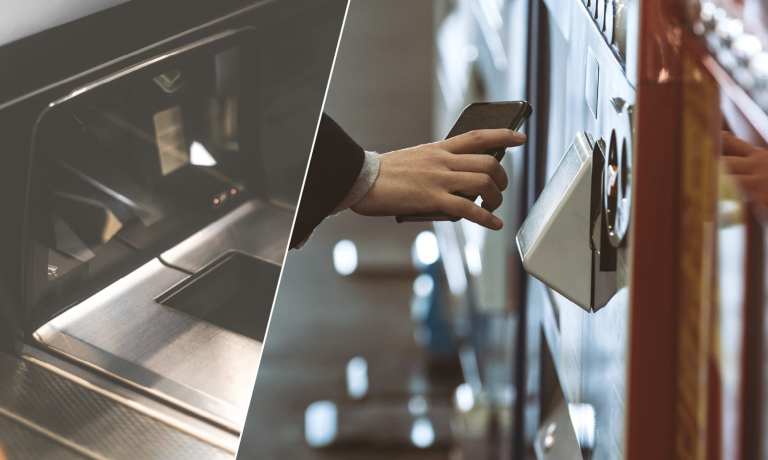The use of unattended retail solutions surged during the pandemic as more consumers sought safe, touchless ways to transact via kiosks, self-service stations, self-checkouts or cashierless stores.
As their use of these technologies grows, more of these consumers have begun to recognize just how valuable such technologies can be by offering them convenient, frictionless and safe purchasing experiences long after the pandemic has passed.
Merchants are also clueing in to unattended retail offerings’ potential, as these solutions can boost sales by 2 percent for every 15 percent increase in customer satisfaction. Nearly 40 percent of consumers who appreciate unattended retail shopping would even be willing to pay more to access these technologies in the future, according to one PYMNTS report. This suggests that these solutions will establish themselves as mainstays for both businesses and consumers in the years ahead.
The April Digitizing Unattended Retail Payments Report explores the late st unattended retail technologies and developments as well as how businesses are tapping into these tools to meet consumers’ demands for digitally oriented physical shopping experiences.
st unattended retail technologies and developments as well as how businesses are tapping into these tools to meet consumers’ demands for digitally oriented physical shopping experiences.
Around The World Of Self-Service Technology
Sales in the refrigerated vending machine market are projected to slip somewhat in the years ahead, but smart vending machines offer one area of promise. Internet-connected vending machines sales are expected to grow, mostly due to customers’ growing familiarity with and appreciation for self-service solutions. The benefit for merchants is also evident, as these machines not only boost sales but allow them to gain real-time insights into the machines’ inventory and any necessary repairs or upgrades.
The speed that self-checkout solutions provide is a big draw for consumers, but some still have a few misgivings about the technology that businesses must address if it is to live up to its full potential. One report found that more than half of all consumers think self-checkout service is faster than lining up in a traditional checkout line, for example, but one-quarter said they were likely to avoid such solutions if they had experienced malfunctions with them in the past. Consumers also indicated that they still worried about the cleanliness of self-checkout options, but most said they still prefer these machines to dealing directly with cashiers.
The in-person experience has not disappeared since the  pandemic began, but it has taken on a decidedly more digital tone. Many consumers now expect their brick-and-mortar interactions to be “phygital,” meaning they want features that promote digitally enhanced in-person experiences. This trend is particularly notable in North America, where many millennials even report switching to brands that offer such service. The trend is only expected to continue, too, as consumers shift more toward digital channels in the banking, healthcare, insurance and travel sectors.
pandemic began, but it has taken on a decidedly more digital tone. Many consumers now expect their brick-and-mortar interactions to be “phygital,” meaning they want features that promote digitally enhanced in-person experiences. This trend is particularly notable in North America, where many millennials even report switching to brands that offer such service. The trend is only expected to continue, too, as consumers shift more toward digital channels in the banking, healthcare, insurance and travel sectors.
Find out more about these and other recent headlines in the Report.
Crane Payment Innovations On The Future — And Challenges — Of Contactless Payments
The pandemic has tested various markets’ preparedness in terms of their ability to offer contactless payments. Even those that were ready to implement such technologies are still facing challenges, however, such as market fragmentation and customers’ lack of awareness about contactless payments and what they entail.
In this month’s Feature Story, Douglas Haddon, vice president of Connectivity Strategy and Product Management at retail merchandising solutions provider Crane Payment Innovations (CPI), explained how contactless solutions have become a necessity during the global health crisis and what merchants must do to drive their adoption.
Check out the story in the Report.
Deep Dive: Businesses, Unattended Retail Solutions And The New Digital Normal
Unattended retail options have built a s teady consumer following in recent years, but the pandemic has kicked the space into overdrive, resulting in rapid growth. Consumers still have their concerns despite the convenience and safety these technologies offer, however, chief among them being their cleanliness and propensity to break down.
teady consumer following in recent years, but the pandemic has kicked the space into overdrive, resulting in rapid growth. Consumers still have their concerns despite the convenience and safety these technologies offer, however, chief among them being their cleanliness and propensity to break down.
This month’s Deep Dive assesses self-service technologies’ growing popularity in the retail, quick-service restaurant (QSR), banking, travel and healthcare sectors as well as the challenges businesses must confront to maximize their potential.
Read more in the Report.
About The Tracker
The Digitizing Unattended Retail Payments Report, a PYMNTS and American Express collaboration, explores how consumers’ interest in unattended shopping experiences has evolved during the pandemic and why businesses must leverage self-service technologies to match their changing preferences.

